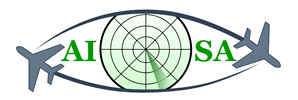What is Artificial intelligence?
An intelligence demonstrated by machines.
What is Aeronautical Information Management?
AIM is dynamic, integrated management of aeronautical information services — safely, economically and efficiently — through the provision and exchange of quality-assured digital aeronautical data in collaboration with all parties.
What is Air Traffic Complexity?
Air traffic complexity is defined as difficulty of monitoring and managing a specific air traffic situation.
What are the Aeronautical Information Services?
AIS is a service established in support of international civil aviation, whose objective is to ensure the flow of information necessary for the safety, regularity, and efficiency of international air navigation.
What is Aeronautical Information Exchange Model?
The objective of the AIXM is to enable the provision in digital format of the aeronautical information that is in the scope of Aeronautical Information Services (AIS).
What is Air Traffic Control?
Air Traffic Control's principal purpose is to maintain sufficient separation between aircraft and between aircraft and obstructions on the ground to avoid collisions.
Who is Air Traffic Controller?
Air traffic controllers manage aircraft though all phases of flight, with a stress on safety, orderliness and efficiency. In their doing so, they use various means of communication, navigation and surveillance in order to give information, instructions and clearances to pilots.
What is Air Traffic Flow Management?
ATFM regulates the flow of aircraft as efficiently as possible in order to avoid congestion of certain control sectors.
What is Air Traffic Management?
ATM is covering all the activities involved in ensuring the safe and orderly flow of the air traffic. It comprises three main services – Air Traffic Control (ATC), Air Traffic Flow Management (ATFM) and Airspace Management (ASM).
What is Automation?
Automation refers to systems or methods in which many of the processes of production are automatically performed or controlled by autonomous machines or electronic devices.
What is Concept of Operations?
A user-oriented document describing the characteristics of a proposed system from the viewpoint of an individual who will use that system. CONOPS is used to communicate the quantitative and qualitative system characteristics to all stakeholders.
What is Demand Capacity Balancing?
The DCB process considers two important types of objects in the ATM system: aircraft trajectories and airspace sectors, and is divided in three phases: Strategic, Pre-tacticaland Tactical Phase. The overall objective is to optimize traffic flows according to ATC capacity while enabling airlines to operate safe and efficient flights.
What is Digitalisation?
Digitisation is the process of converting information into a digital (i.e. computer-readable) format, in which the information is organized into bits. This is the binary data that computers and many devices with computing capacity can process.
What is En-route ATC Operations?
The en route phase of flight is defined as that segment of flight from the termination point of a departure procedure to the origination point of an arrival procedure.
What is Humane-machine System?
Human–machine system is a system in which highly-skilled human operators use tools of varying complexity to perform cognitively difficult and exacting work in a very demanding, sometimes dangerous and always highly dynamic physical environment.
What is Knowledge Engineering?
Knowledge engineering refers to all technical, scientific and social aspects involved in building, maintaining and using knowledge-based systems. Knowledge Engineering is the process of imitating how a human expert in a specific domain would act and take decisions.
What is Knowledge Graph?
The KG represents a collection of interlinked descriptions of entities – real-world objects, events, situations or abstract concepts where descriptions have a formal structure that allows both people and computers to process them in an efficient and unambiguous manner and where entity descriptions contribute to one another, forming a network, where each entity represents part of the description of the entities, related to it.
What is ontology?
Ontology is a formal naming and definition of the types, properties, and interrelationships of the entities that really or fundamentally exist for a particular domain of discourse.
What are the semantic technologies?
Semantic technology encodes meanings separately from data and content files, and separately from application code. This enables machines as well as people to understand, share and reason with them at execution time. With semantic technologies, adding, changing and implementing new relationships or interconnecting programs in a different way can be just as simple as changing the external model that these programs share.
What is SESAR?
Single European Sky ATM Research (SESAR) is a collaborative project to completely overhaul European airspace and its air traffic management (ATM). The actual programme is managed by the SESAR Joint Undertaking as a public–private partnership (PPP).
What is SESAR Exploratory Research?
SESAR's contribution of Exploratory Research is twofold:
- First, it is a catalyst to create a healthy European research capability for ATM and related air transport that will persist beyond the lifetime of the SESAR development programme.
- Secondly, it makes provision and provides funding for research activities that are not currently part of the ‘mainstream’ SESAR workpackages. Such research addresses applications to become operational beyond the nominal SESAR timeframe and also allows for innovative work that may have application in the nearer term.
What is SWIM?
The concept of SWIM – System Wide Information Management - covers a complete change in paradigm of how information is managed along its full lifecycle and across the whole European ATM system. The implementation of the SWIM concept will enable direct ATM business benefits to be generated by assuring the provision of commonly understood quality information delivered to the right people at the right time.
Funded by
Contact information
Prof. Tomislav Radišić
University of Zagreb
tradisic@fpz.unizg.hr


